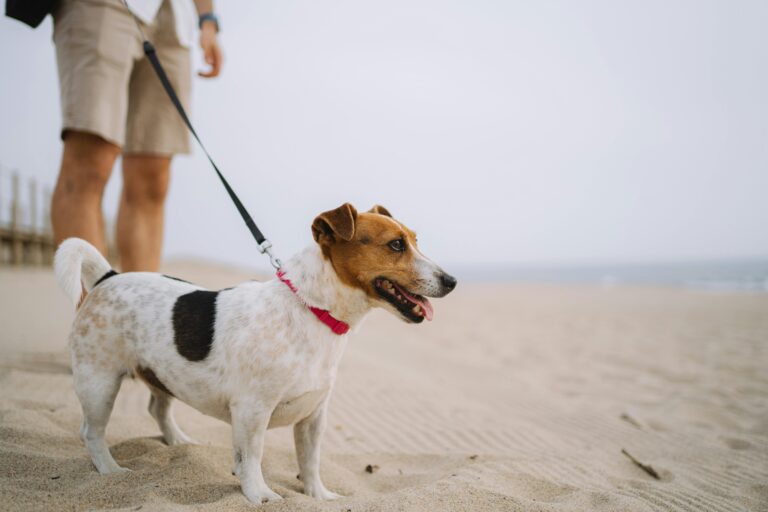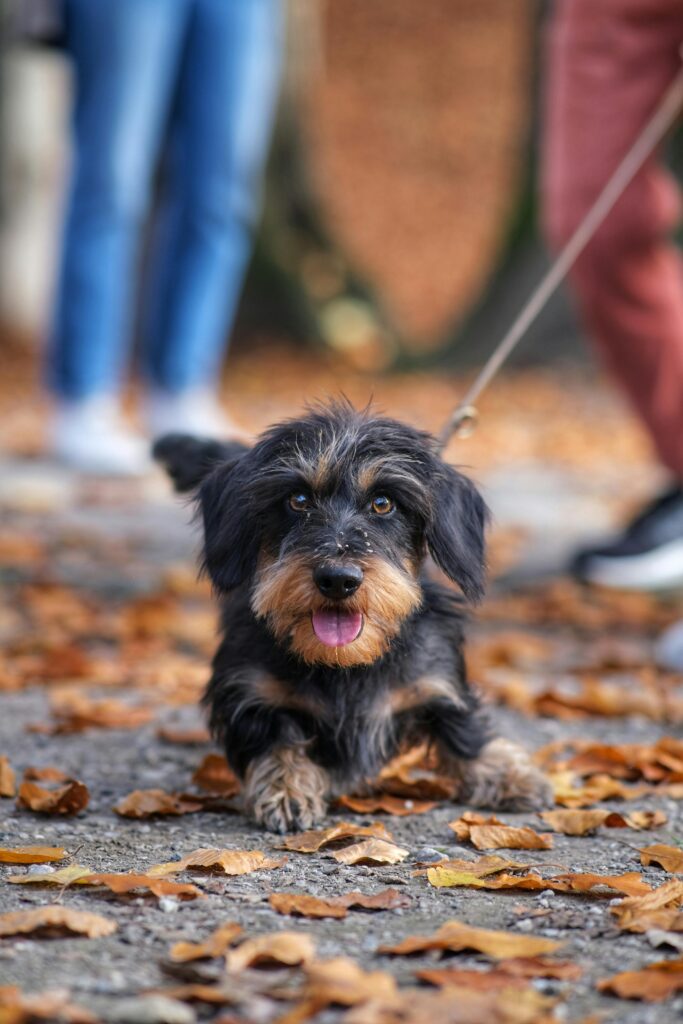As fall approaches in North Alabama, cooler temperatures and beautiful trails make it the perfect season for outdoor adventures with your dog. But if your pup turns every walk into a tug-of-war, those scenic strolls can quickly become frustrating.
Loose leash walking is one of the most valuable skills you can teach your dog. It makes walks more enjoyable, builds communication, and reduces stress for both of you. Whether you’re exploring parks, hitting a hiking trail, or walking around your neighborhood, leash manners matter.
Here’s how to teach your dog to walk calmly by your side and stop pulling, just in time for fall fun.
What Is Loose Leash Walking?
Loose leash walking means your dog walks beside you with the leash slack, not tight or pulling forward. It’s different from formal heeling, which requires precise positioning. Loose leash walking is about relaxation, not perfection.
This skill teaches your dog to stay connected to you even around distractions like squirrels, smells, other dogs, and joggers.
If you’re dealing with a high-energy dog who’s constantly lunging or pulling, our Leash Training for High-Energy Dogs blog breaks down how to manage arousal before the walk even begins.
Why Dogs Pull on Leash
Pulling isn’t your dog being stubborn or dominant. It’s often due to:
- Lack of leash training
- High excitement or energy
- Reinforcement (they pull and get to where they want to go)
- Distractions that override their focus
Most dogs pull because they’ve never learned how to walk nicely or that pulling doesn’t get them what they want.
Step 1: Start With Calm Energy
Before you step outside, help your dog settle. Over-excitement at the door often leads to chaotic walks.
Try this pre-walk routine:
- Have your dog sit calmly before the leash goes on
- Practice a few basic commands inside (sit, down, place)
- Only open the door once your dog is calm and focused
Dogs feed off your energy too. Calm handling encourages calm behavior.
Step 2: Use the Right Equipment
The right tools can make a big difference during leash training. A standard 4-6 foot leash and properly fitted collar or training device (as recommended by your trainer) give you better control than a retractable leash.
Avoid these common gear issues:
- Long leads that encourage wandering
- Harnesses designed for pulling (like sled or tracking harnesses)
- Tension on the leash, which can increase pulling
Need personalized guidance on what tools work best for your dog? Our Basic Obedience Program is tailored to your dog’s size, breed, and energy level.
Step 3: Teach “Check-In” Behavior
Loose leash walking starts with engagement. You want your dog to check in with you regularly during the walk.
Practice this drill:
- Stand still with your dog on leash
- Wait for them to glance up at you (even briefly)
- Mark it with a “yes” and reward
- Repeat until your dog starts offering eye contact naturally
This builds the habit of looking to you for direction, even around distractions.
Step 4: Use the Stop-and-Go Method
If your dog pulls, stop walking immediately. Don’t yank or scold. Just freeze. When they return to your side or the leash goes slack, resume walking.
Consistency is key.
- Pulling = no progress
- Loose leash = forward motion
Over time, your dog learns that pulling gets them nowhere, while walking calmly gets them where they want to go.
Step 5: Add Distraction Training Gradually
Once your dog can walk calmly at home or in your yard, start introducing controlled distractions like people, dogs at a distance, and squirrels.
Use real-world settings to practice:
- Sidewalks during light foot traffic
- Parks with low to moderate activity
- Local outdoor shopping areas
Reward focus and loose leash walking behavior frequently, especially when distractions appear.
Don’t Skip Mental Exercise
A tired dog walks better. Incorporating mental stimulation before walks can reduce pulling and reactivity.
Try:
- 5 minutes of obedience drills
- A short “find it” or scent game
- Puzzle toys while you prep for the walk
We explore this concept further in our blog on keeping your dog active when it’s too hot, and those same indoor exercises can help set the tone for focused leash behavior.
What the Experts Recommend
According to the American Kennel Club, choosing the right collar or harness is essential for training success. The tool should support communication, not just control. A professional trainer can help you choose based on your dog’s needs and walking habits.
Final Tip: Practice Before the Adventure
Planning a fall hike, camping trip, or downtown festival? Don’t wait until the big day to test your dog’s leash skills.
Instead:
- Simulate busy environments ahead of time
- Practice walking near groups, bikes, and food distractions
- Reinforce obedience in new locations regularly
If your dog needs structured help, our Basic & Advanced Obedience Program includes outdoor sessions to help build leash manners in real-world scenarios.
Make This Fall the Best One Yet
Loose leash walking unlocks freedom and peace of mind. Whether you’re strolling through your neighborhood or heading to the mountains, your dog’s ability to walk calmly by your side will transform your outings.
If you’re ready to enjoy relaxed, adventure-ready walks this fall, let’s get started. Reach out through our contact page and take the first step toward better leash behavior today.


